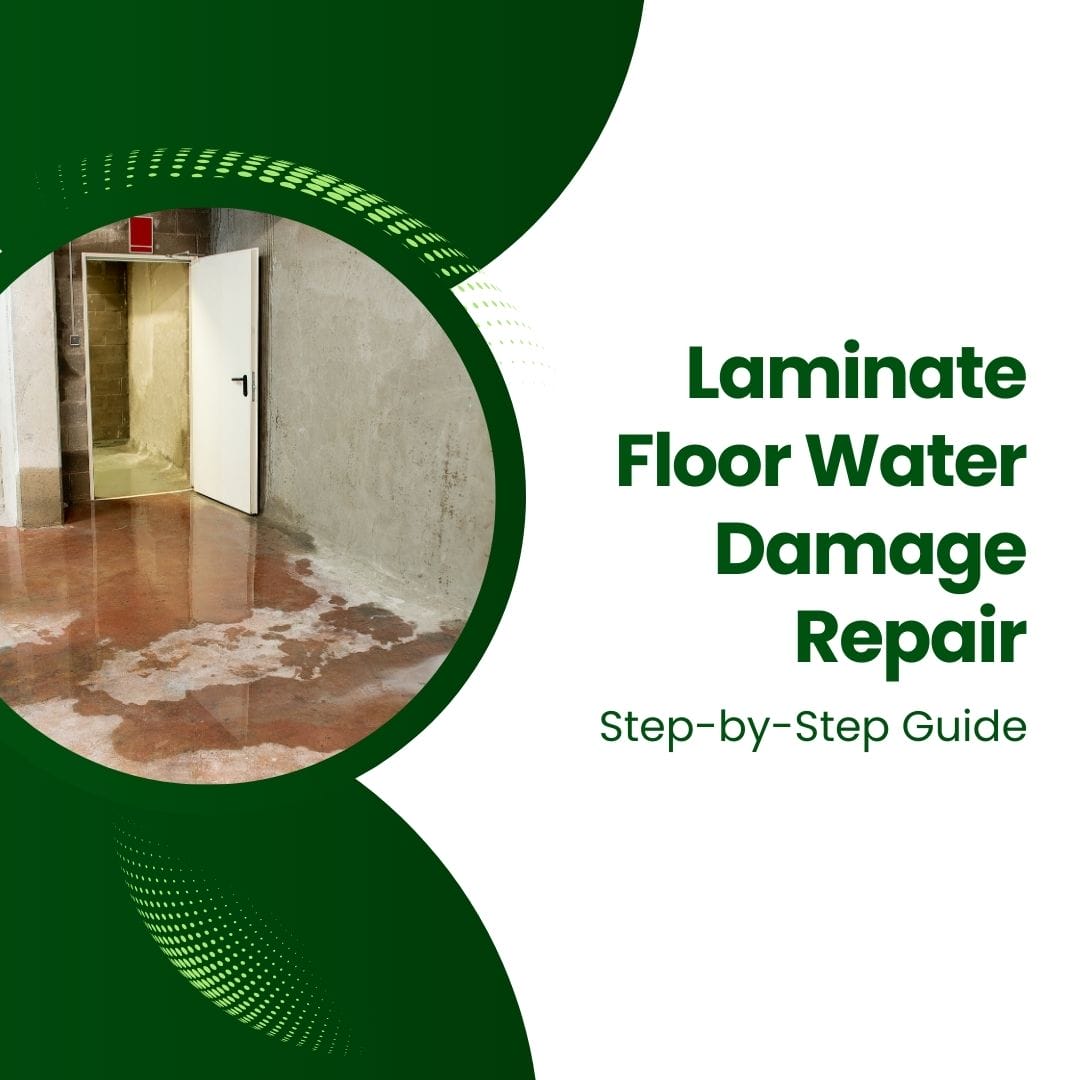Laminate flooring is durable, more affordable than other floorings, and adds to the aesthetics of the place. It is a popular choice amongst homeowners because of its looks and ability to withstand everyday wear and tear.
But, no matter how durable your laminate floor is, flooding does not bode well. When you let water sit on laminate flooring for too long, it seeps into the joints and soaks the wood from underneath, which causes bubbling, buckling, and swelling. These problems are annoying eyesores. If left untreated, these issues become worse over time.
Fortunately, there are several ways to fix swollen laminate flooring. I will be explaining each method in detail so that you can have your floors looking good as new.
Learn a Step-by-Step Guide on How to Repair Laminate Flooring Like a Pro
How to Do Laminate Floor Water Damage?
Laminate flooring is not compatible with humidity and water, which raises questions about layering it over other materials like tile. Learn more about the problems with putting laminate over tile. Laminate floor water damage can be irreversible in many cases, even in a short time.
All manufacturers instruct you should keep laminate floors away from water and humid environments such as in the laundry room or bathroom. This is because the wood material used in laminate floors expands and contracts due to environmental changes.
However, do not panic if you spill water on the wood flooring. The laminate floors do not break down when they come in contact with water. It is easy to fix if it is handled carefully. It would be best to clean the area to prevent water from seeping beneath the floor.
The real problem starts when water seeps underneath the laminate flooring. Since laminate floors are installed with expansion gaps that allow them to expand and contract as needed, these gaps leave room for water to make its way underneath the floating floor. The wood soaks up that water which causes problems related to water damage.
How to Repair the Water Damage to Laminate Floors?
Most types of water damage to laminate floors are irreplaceable. However, you can save your laminate floors if you act fast enough. But exposure to water, even for a short time, can cause permanent damage to the floorboards.
Visit our guide on how to fix buckling in laminate floors
Here are a few ways in which you can fix minor water damage.
Heat Gun or Dryer
You can repair minor water damage to the laminate floor with a heat gun, especially if the water is peeling the board at the edges of your laminate floor with a heat gun. Make sure you wear gloves to avoid burns.
Heat the peeling area to evaporate the moisture in the wood. Heating the board may get the peel back to its place. You can put something heavy on the top to push the edges back in place. Then you can stick the board to the floor with glue.
See how to clean old wood floors without refinishing.
Sanding
If the water damage is not too bad, you can remove the afflicted part by sanding the area. Use fine-gritted sandpaper to remove the damaged area and paint it to blend it with the rest of the floor.
Replacing the Water Damaged Planks
Replacing the damaged or swollen laminate flooring might be the only way to repair the water-damaged floor. To proceed with this method, you will need the following tools:
- Putty knife
- Measuring tape
- Safety glasses
- Flooring adhesive
- Pliers
- Utility knife
- Hammer
- Replacement underlayment material
- Cleaning solvent
Apart from these tools, you will need extra floorboards to replace the water-damaged planks.
Step 1: Remove the Damaged Board
Once you have gathered all the things you need, you can proceed to remove the damaged planks. Also, ensure you have examined all the damaged areas and have the replacement planks with you.
Remove the entire floor plank even if only a small part has been damaged because it will worsen if left unchecked. Pull the damaged plank carefully to expose the floor underneath. Check the floor to see the signs of mold on the bare floor and clean it before installing new planks.
Step 2: Replace the Damaged Laminate Planks With New Laminate Planks
Make sure you replace the damaged planks with matching boards, so your floor doesn’t look odd. If you can’t find the same design as your floor, you can buy one almost similar to your laminate floor.
Place the replacement in its position and check if it fits perfectly on the floor. Once the replacement is secure with adhesive, you can proceed to put the other laminate planks back. Then put some heavy objects on the laminate and leave it till the adhesive dries up.
How to Prevent Water Damage on Laminate Flooring?
Stop Leakages and Spills
The first thing you should do is: identify the source of water that damaged your floor. If the damage wasn’t caused by an accident or a spill, you should look for the leakage from your dishwasher or kitchen pipes. Fix the leaking pipes before you proceed to repair the laminate flooring.
Learn how to remove scratches from wood floors
Wipe Off Excess Water Immediately
The top finish of the laminate floorboards is water-resistant and can handle small spills. However, it would be best if you did not let the water sit on the surface for too long. Instead, wipe and dry the spill as soon as it occurs. You can use a dryer at low settings to speed up drying.
Read should you steam clean hardwood flooring?
Remove the Affected Planks Before They Affect Others.
Water damage can spread to adjacent boards if the problem is left untreated. Therefore, repair or replace the planks as soon as you notice the problem before it spreads to the other boards.
You can remove the affected boards with your bare hands, but some boards may require special attention. For hard-to-remove boards, you can use additional tools like a pry bar or knife to lift the panels from the barrier underneath.
Be careful with laminate boards so that you do not damage other boards. Also, remember that laminate flooring is locked with an interlocking system to fit the pieces together.
Check the Affected Area
Water moves fast through the laminate floor. So even if the spots are unnoticeable, you may have other problems, such as bacteria and mold build-up under the laminate floor.
You can tap on the damaged floorboards to see if it feels unusual or may suggest there is water underneath. Also, look for visible changes in your laminate flooring. The damaged boards will likely have some discoloration and can become misshapen or buckle when exposed to water.


